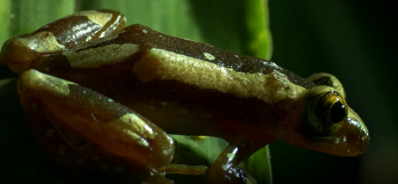Relative clauses: banana frog
The Grammar Bit!
Read the three scintillating sentences opposite. They each contain a relative clause (bold). A relative clause gives the reader extra information about the preceding noun.
In a relative clause, this extra piece of information is introduced by a relative pronoun (underlined). There are 5 basic relative pronouns: who, which, that, whose, and whom.
It is important to note the following:
who – is used when referring to a person (although it can be used for animals when there is an element of personification).
which – is used when referring to a place, animal or thing
that – can refer to a place, animal or thing
Sometimes the relative pronoun can be left out altogether. With your talk partner, read each sentence without the relative pronoun. Which version works best – with or without? Do any other changes need to be made to the sentence if the pronoun is omitted?
Scintillating Sentences
1) The determined male scrambled higher and higher towards the bamboo forest canopy that was drenched in monsoon rain.
2) The banana frog’s impressive croaks, which were much louder than his competitors, were the reason why he was victorious in winning the female’s affection.
3) The amorous amphibian, who was desperate to find the best spot in the tree canopy, used his exceptionally long limbs to fight off his old adversary.

Did you know?
Frogs do not drink water as we do. Instead, they absorb water through special water patches on their skin, which can be found on their belly and the underside of their thighs.

